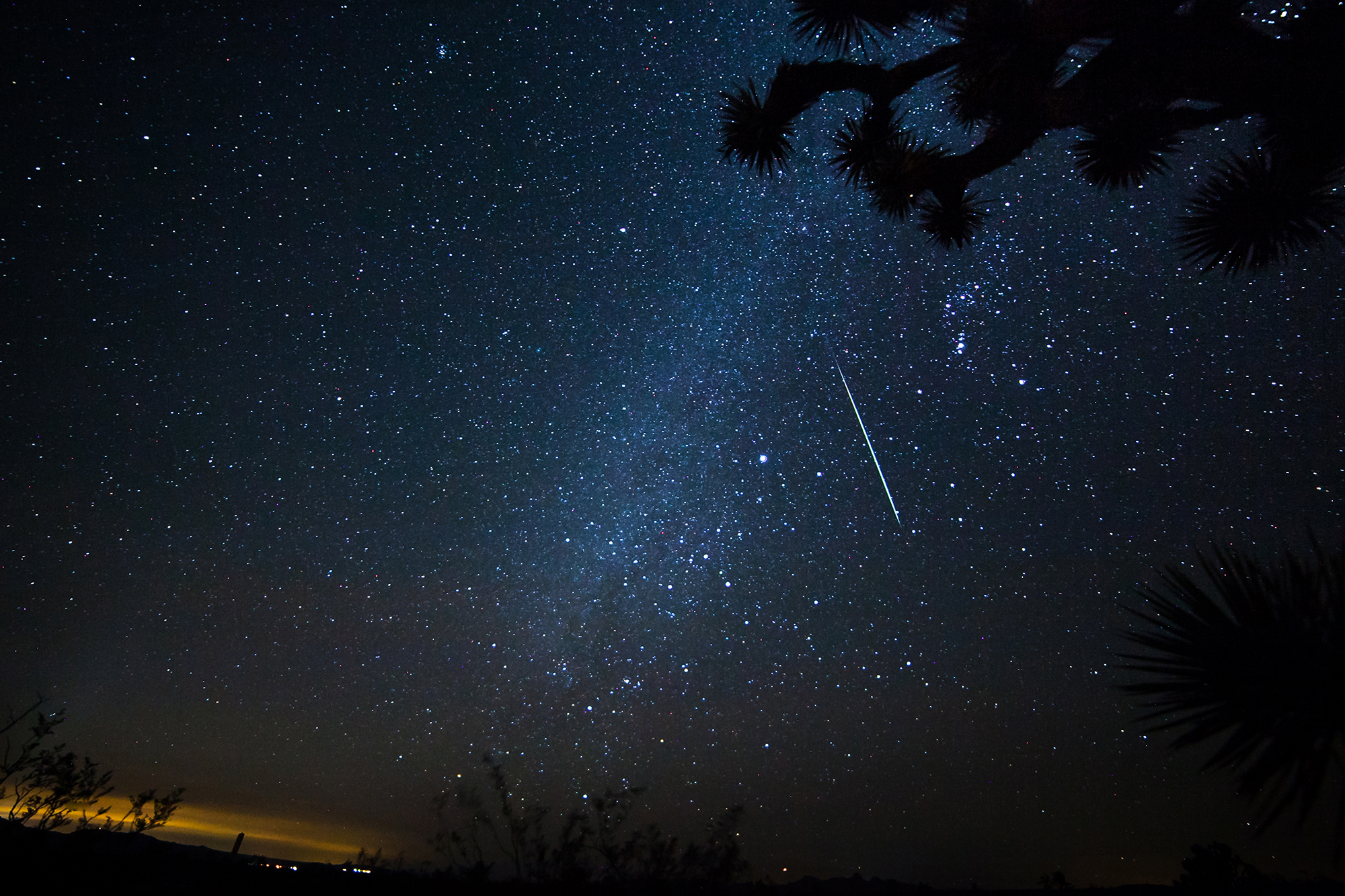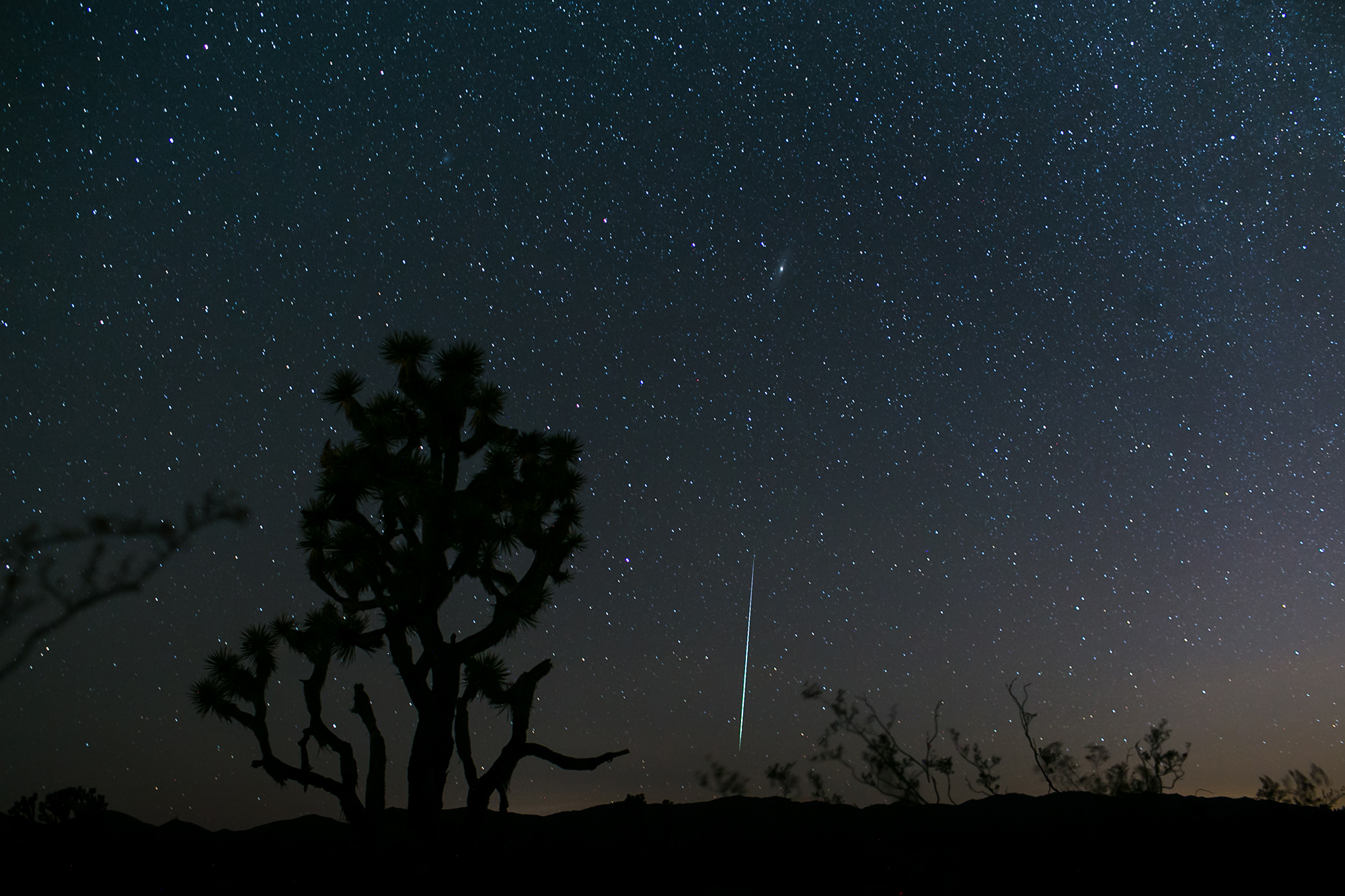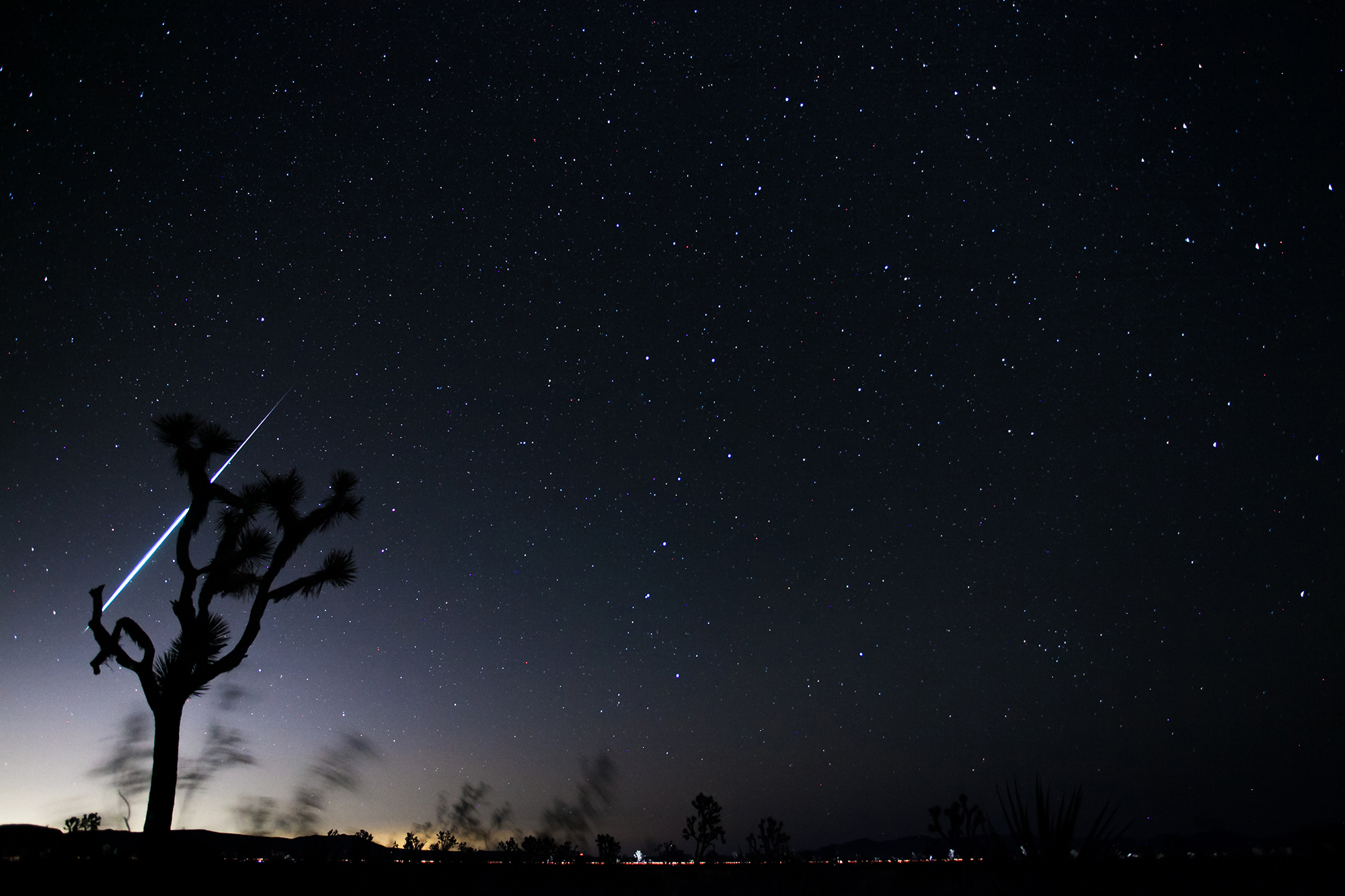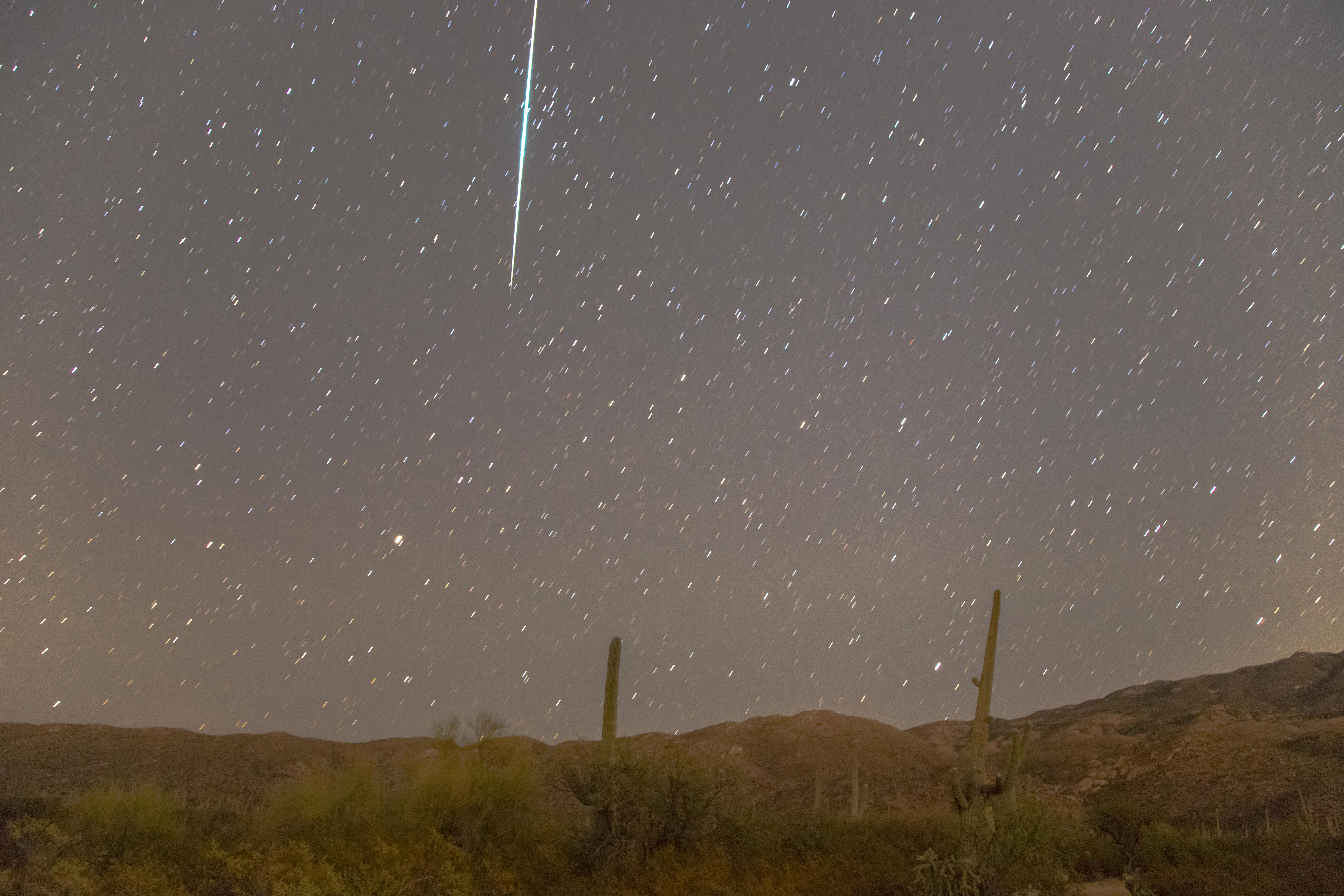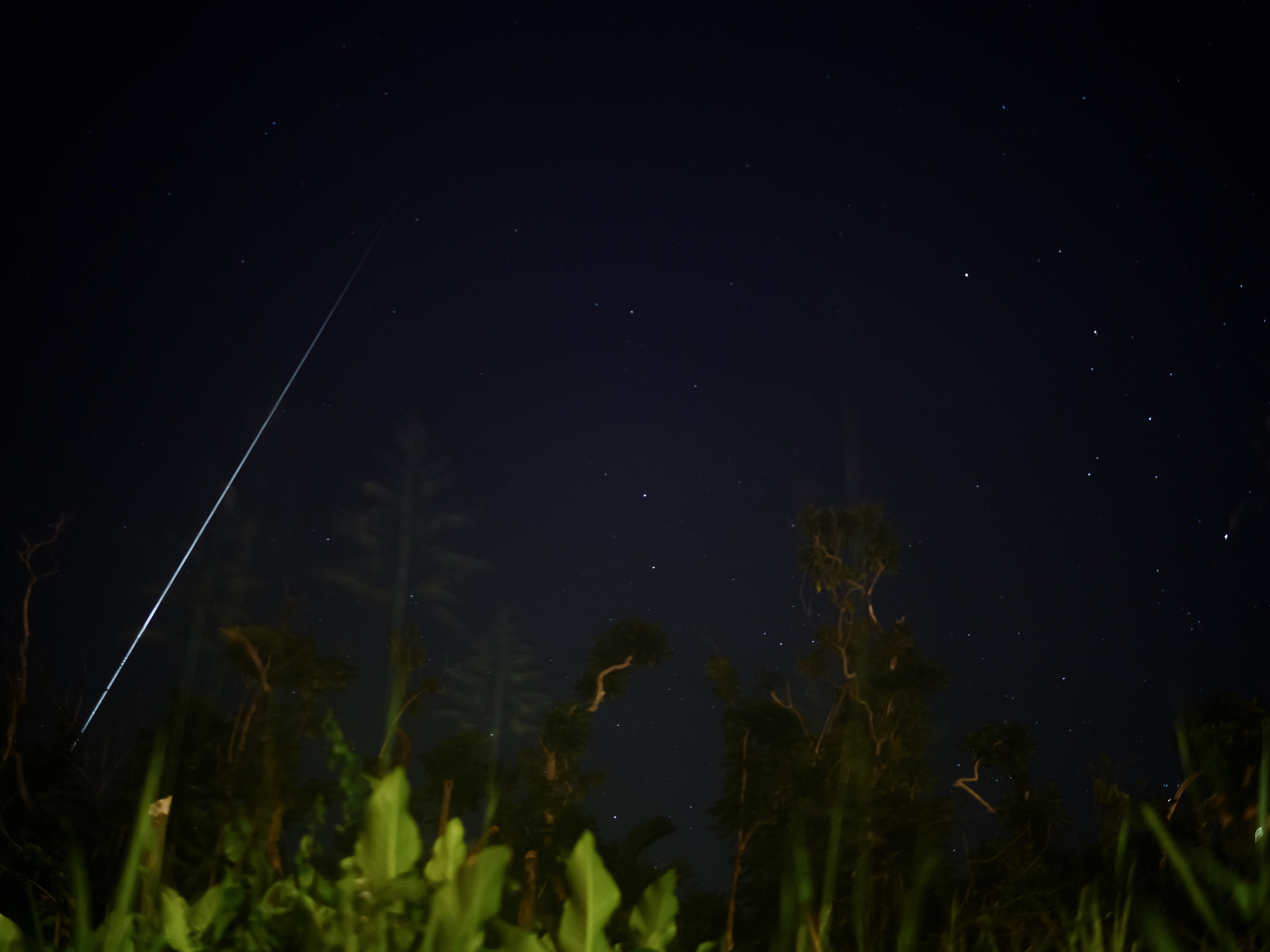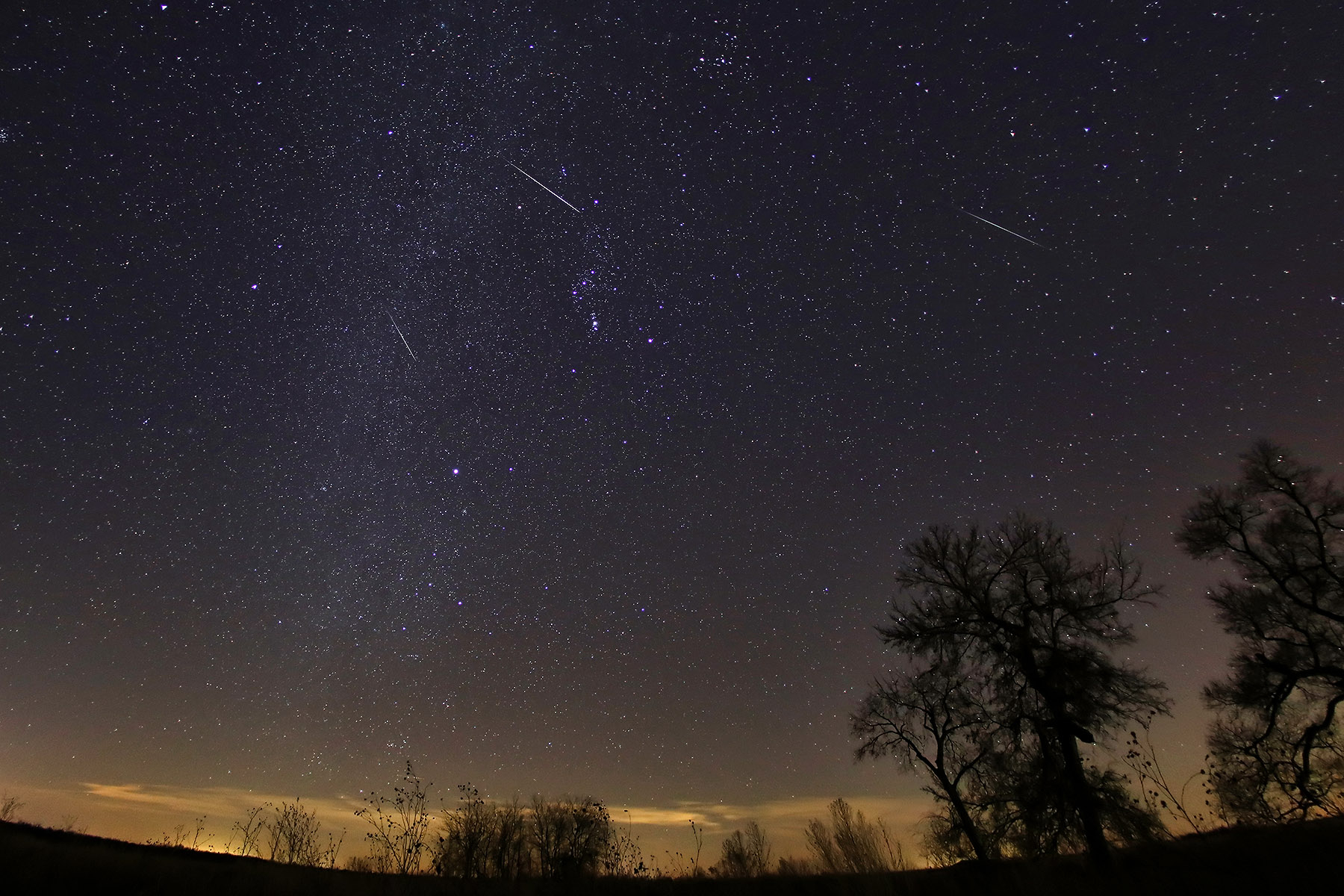Geminid Meteor Shower Puts on a Stellar Show for Stargazers (Photos)
The best meteor shower of 2017 peaked overnight last night and early Thursday (Dec. 14), producing stunning light displays of up to 100 "shooting stars" per hour. Night-sky photographers stayed up late to catch some of the shooting stars on camera, and they captured some amazing views.
Known as the Geminid meteor shower, this celestial show happens every year in mid-December as Earth passes through a stream of particles associated with the asteroid 3200 Phaethon. Astronomers believe the asteroid crashed into another space rock long ago, producing a cloud of meteoroids that brilliantly burn up as they rain down on Earth's atmosphere.
This year's Geminids put on an especially beautiful show for skywatchers and astrophotographers. Although a bright, full supermoon washed out the light display in 2016, the thin, crescent moon didn't obstruct the view with moonlight this year. Here are some of the most spectacular photos of the 2017 Geminid meteor shower. [See more amazing 2017 Geminid Meteor Shower photos by stargazers]
"A truly awesome display of Geminid meteors this year," astrophotographer Victor Rogus, who shot the video above, told Space.com in an email. "Cool, clear nights here in De Soto County, Florida, allowed me to capture at least 10 Geminids on video all in the vicinity of Orion. I have always had good luck capturing Geminids in that constellation," Rogus said. "Orion has been a favorite meteor hunting ground for me."
In Nevada's Mojave Desert, just south of Las Vegas, photographer Tyler Leavitt captured several photos of Geminid meteors dashing through the starry sky. In one of Leavitt's shots, you can see the Andromeda galaxy shining high and bright in the sky. To find it, follow the tail of the meteor about two-thirds of the way up from the bottom of the photo. [December Lights: 6 Facts for the Geminid Meteor Shower]
In another one of Leavitt's shots, a Geminid meteor appears to pierce a Joshua tree like a fluorescent spear falling from the sky. "It was a little breezy and cold for us in the desert," Leavitt told Space.com in an email.
A bit further south in Tucson, Arizona, astrophotographer BG Boyd just barely managed to capture an especially large meteor as it flashed through the night sky. "This was one of the biggest meteors I have seen in recent memory and the largest I have ever captured," Boyd told Space.com in an email. "Sadly, there was still more of it outside of the frame that I missed."
Breaking space news, the latest updates on rocket launches, skywatching events and more!
In Puerto Rico, photographer Jorge Colomer was thrilled to have captured an enormous Geminid meteor on camera. "When I saw how big and long this one was, I looked to the monitor of my camera to see if I got it inside the frame, and wow, I got it!!! One of the best experiences of my life, it felt like an adrenaline type of rush with a lot energy," Colomer told Space.com in an email.
In northeast Texas, photographer Tony Corso woke up early this morning (Dec. 14) to capture some Geminid meteors on camera. "What a show it was," Corso told Space.com in an email. He managed to capture several meteors on camera, including the three in the photo above.
Editor's note: If you have an amazing night-sky photo you'd like to share with us and our news partners for a possible story or image gallery, please contact managing editor Tariq Malik at spacephotos@space.com.
Email Hanneke Weitering at hweitering@space.com or follow her @hannekescience. Follow us @Spacedotcom, Facebook and Google+. Original article on Space.com.

Hanneke Weitering is a multimedia journalist in the Pacific Northwest reporting on the future of aviation at FutureFlight.aero and Aviation International News and was previously the Editor for Spaceflight and Astronomy news here at Space.com. As an editor with over 10 years of experience in science journalism she has previously written for Scholastic Classroom Magazines, MedPage Today and The Joint Institute for Computational Sciences at Oak Ridge National Laboratory. After studying physics at the University of Tennessee in her hometown of Knoxville, she earned her graduate degree in Science, Health and Environmental Reporting (SHERP) from New York University. Hanneke joined the Space.com team in 2016 as a staff writer and producer, covering topics including spaceflight and astronomy. She currently lives in Seattle, home of the Space Needle, with her cat and two snakes. In her spare time, Hanneke enjoys exploring the Rocky Mountains, basking in nature and looking for dark skies to gaze at the cosmos.
